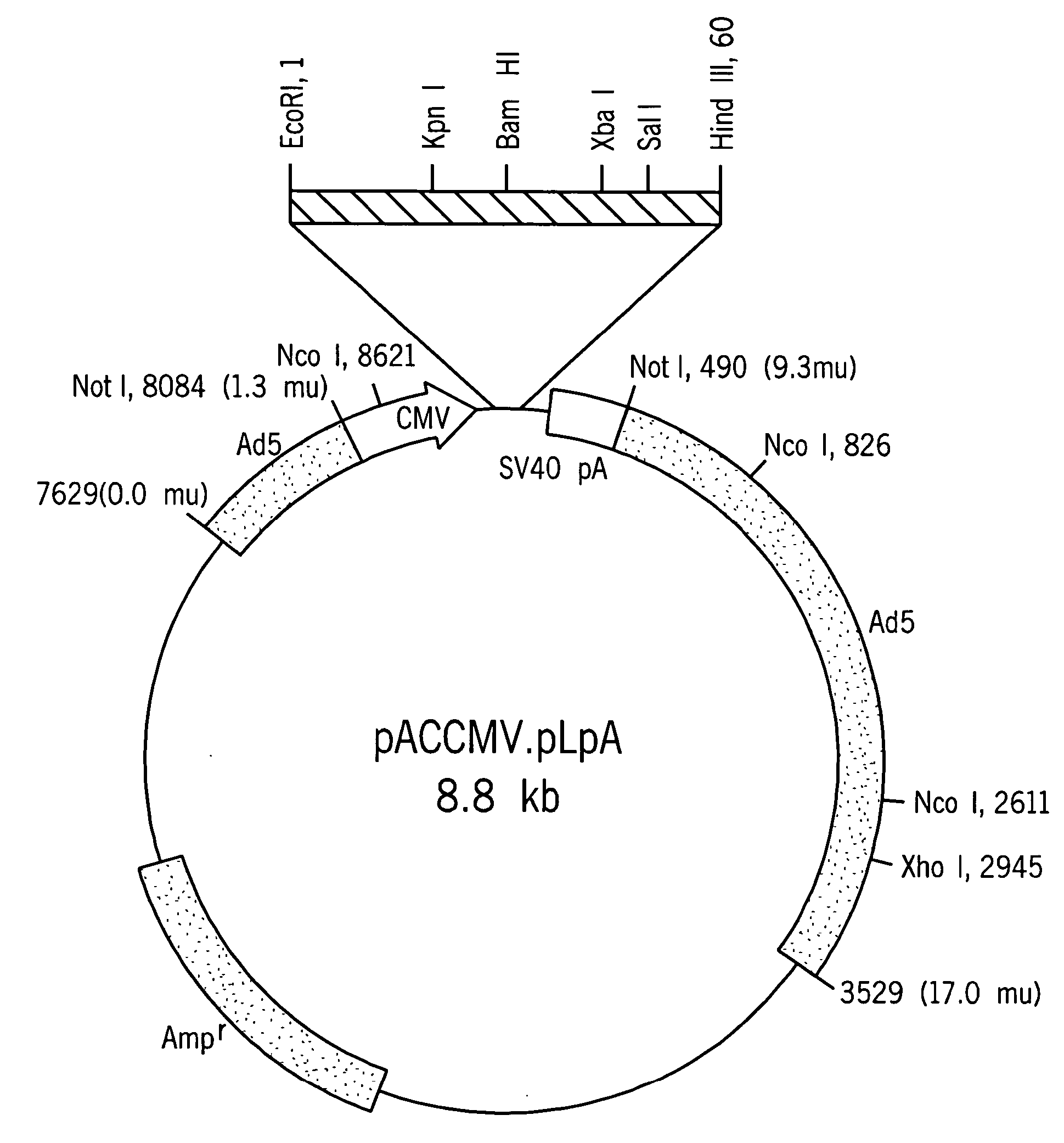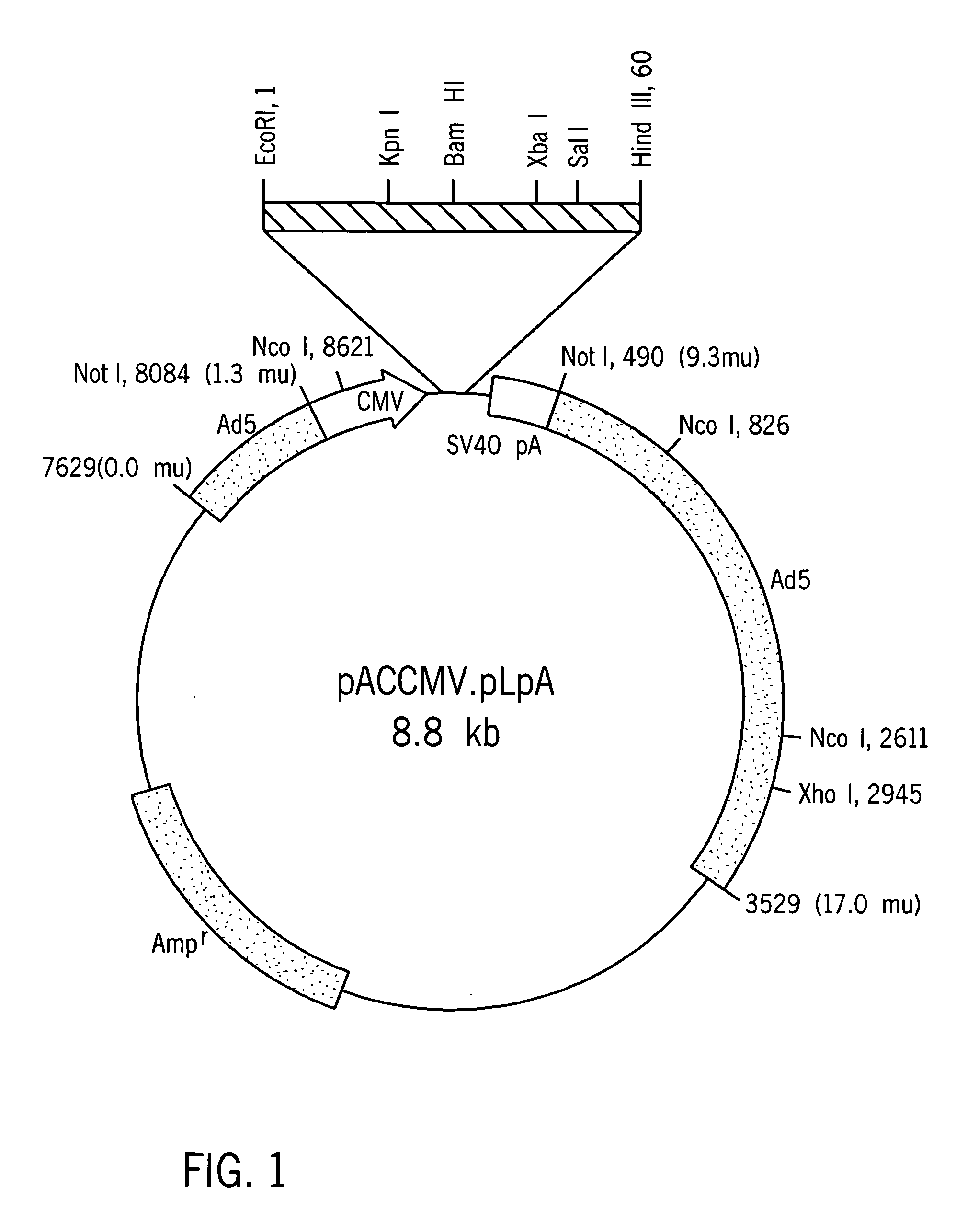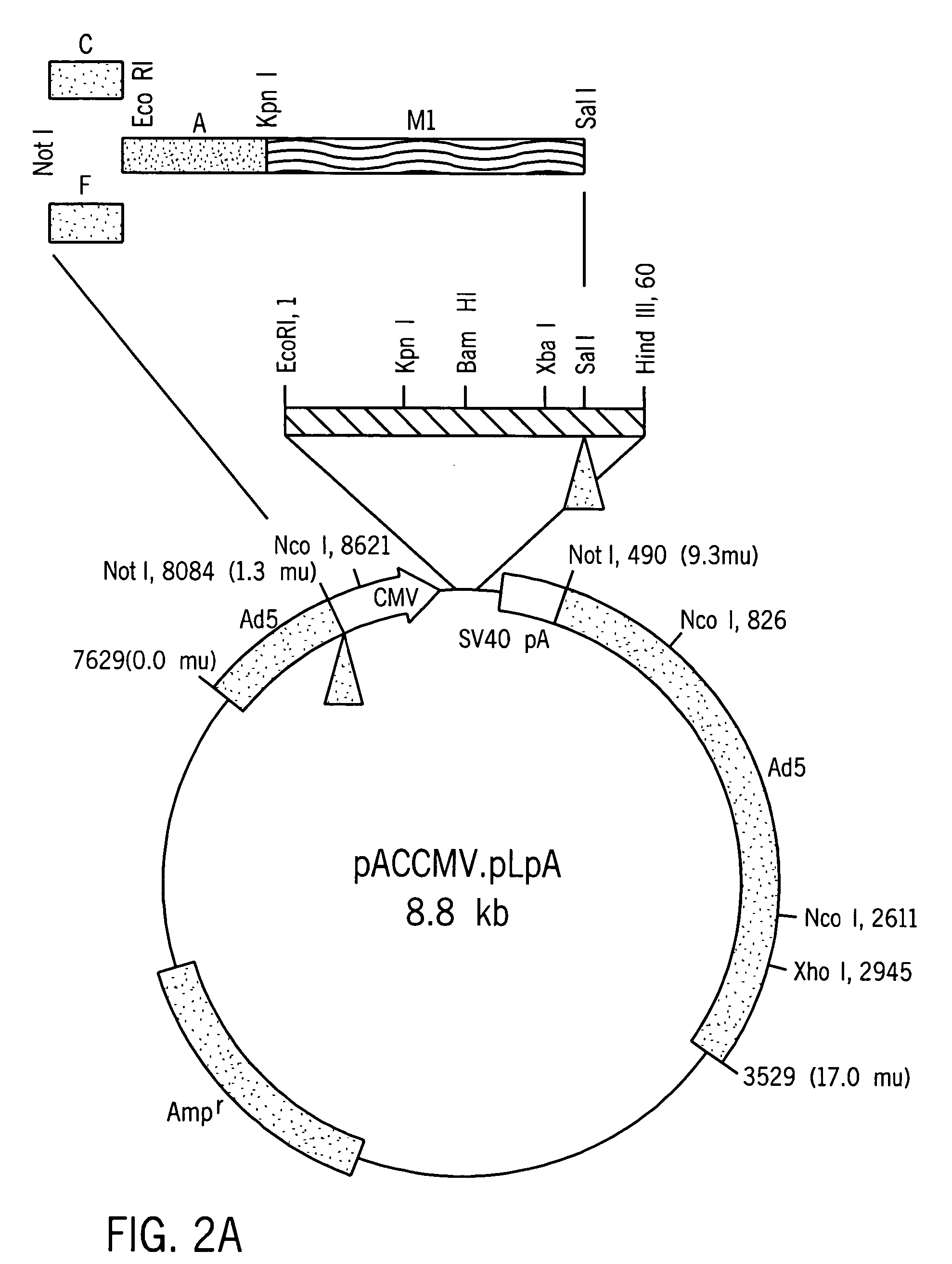Treatment of diabetes with synthetic beta cells
a technology of synthetic beta cells and diabetes, applied in the direction of drug compositions, viruses, metabolic disorders, etc., can solve the problems of diabetes being fatal, blood glucose levels to drop to dangerously low levels, glucose uptake and high blood glucose levels, etc., to reduce the formation of secondary structures and reduce the expression of preproinsulin
- Summary
- Abstract
- Description
- Claims
- Application Information
AI Technical Summary
Benefits of technology
Problems solved by technology
Method used
Image
Examples
example 1
Isolation of Proinsulin Coding Sequences
[0047] Proinsulin cDNA was prepared by extracting total RNA from normal human islet cells, isolating the mRNA fraction and using it as a template to conduct an oligo (dT)15 primed reverse transcription reaction. Insulin cDNA (−28 bp443 bp) was amplified using sense and antisense oligonucleotides designated TA423 (SEQ ID NO:1) and TA413 (SEQ ID NO:2) which include restriction sites for KpnI and SalI, respectively. Alternatively, cDNA can be isolated according to the methods described in Bell, et al., Nature, 282:525 (1979), using the primers disclosed therein, but incorporating restriction sites compatible with the selected cloning vehicle.
[0048] The amplified cDNA fragment (−28 bp-443 bp) containing the entire coding sequence of human insulin and portions of the 5′-UTR and the 3′-was subcloned into pBlueScript SK+ (Shon, et al., Nuc. Acids Res., 16: 7583, 1988).
example 2
Amplification of Rat Albumin Promoter
[0049] A sequence comprising nucleotides 1-184 of the rat albumin (Heard, et al., Mol. Cell. Biol., 7: 2425-2434, 1987, incorporated herein by reference) was obtained by PCR amplification with synthetic primers using rat genomic DNA as the template DNA. The primers, which contain EcoRI and KpnI restriction sites, were designated TA420 (SEQ ID NO:6) and TA421 (SEQ ID NO:7). The amplified rat albumin promoter fragment was purified and incubated under suitable conditions with Kpn I and Eco RI, and ligated to linearized pBlueScript DNA having compatible ends. The sequence (SEQ ID NO:24) was verified by conventional sequencing techniques.
example 3
Generation of a Mutant Insulin with Cleavable C-A and B-C Junctions
[0050] A mutation that changes the codon specifying Leu to a codon specifying Arg at position 62 was made using standard in vitro mutagenesis. The sense oligonucleotide TA403 (SEQ ID NO:3), which includes a point mutation corresponding to the desired change in the target region, and oligonucleotide TA413 (SEQ ID NO:2) were used as primers to amplify one segment of insulin sequence. Similarly, an antisense oligonucleotide TA404 (SEQ ID NO:4) containing the Leu to Arg mutation was used with the original insulin sense oligonucleotide TA423 (SEQ ID NO:1) to amplify the second fragment of modified insulin (M1). The two fragments thus produced were purified, combined, and used as template DNA to amplify the modified insulin M1 using oligonucleotides TA423 and TA413 as primers. The C-A modified insulin M1 was ligated to pBlueScript SK+, linearalized with KpnI and SalI, or used as a template for generating a second mutant c...
PUM
| Property | Measurement | Unit |
|---|---|---|
| concentration | aaaaa | aaaaa |
| concentration | aaaaa | aaaaa |
| pH | aaaaa | aaaaa |
Abstract
Description
Claims
Application Information
 Login to View More
Login to View More - R&D
- Intellectual Property
- Life Sciences
- Materials
- Tech Scout
- Unparalleled Data Quality
- Higher Quality Content
- 60% Fewer Hallucinations
Browse by: Latest US Patents, China's latest patents, Technical Efficacy Thesaurus, Application Domain, Technology Topic, Popular Technical Reports.
© 2025 PatSnap. All rights reserved.Legal|Privacy policy|Modern Slavery Act Transparency Statement|Sitemap|About US| Contact US: help@patsnap.com



